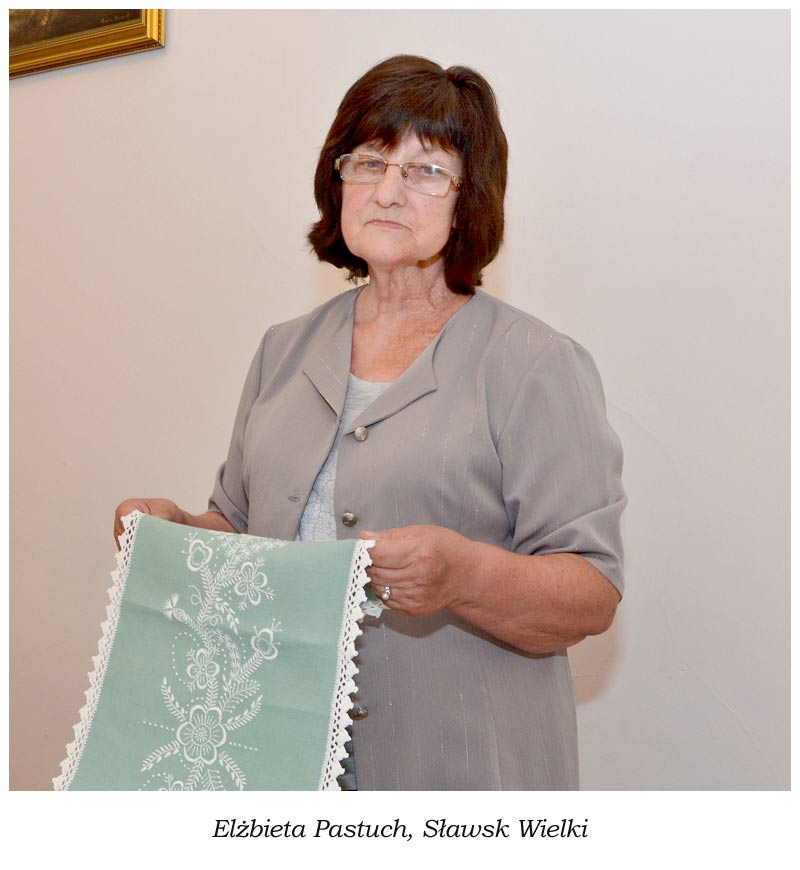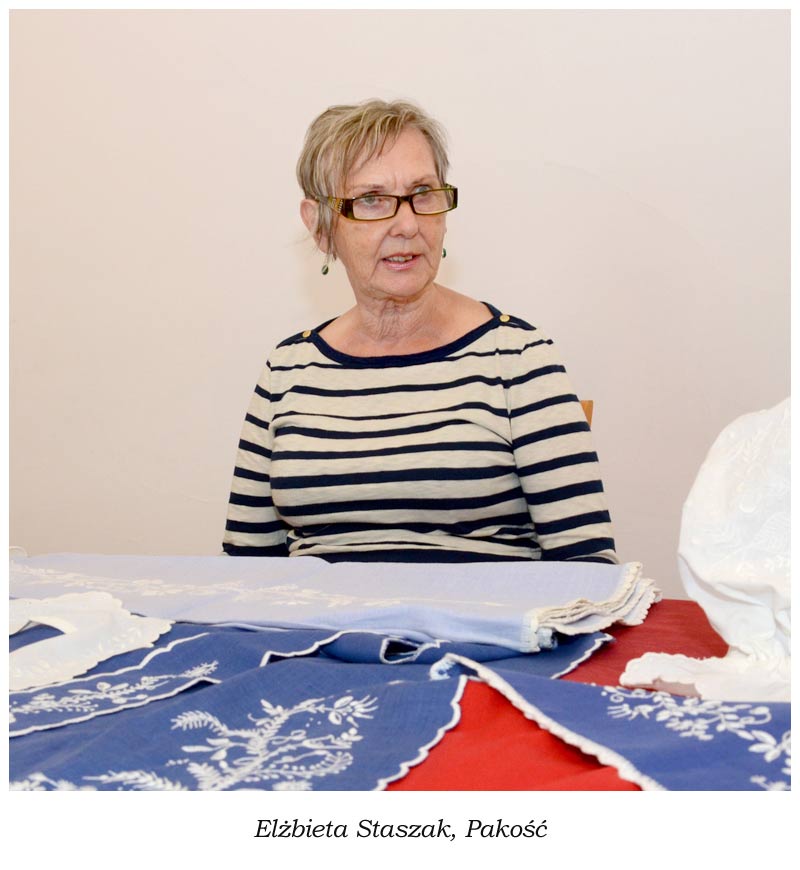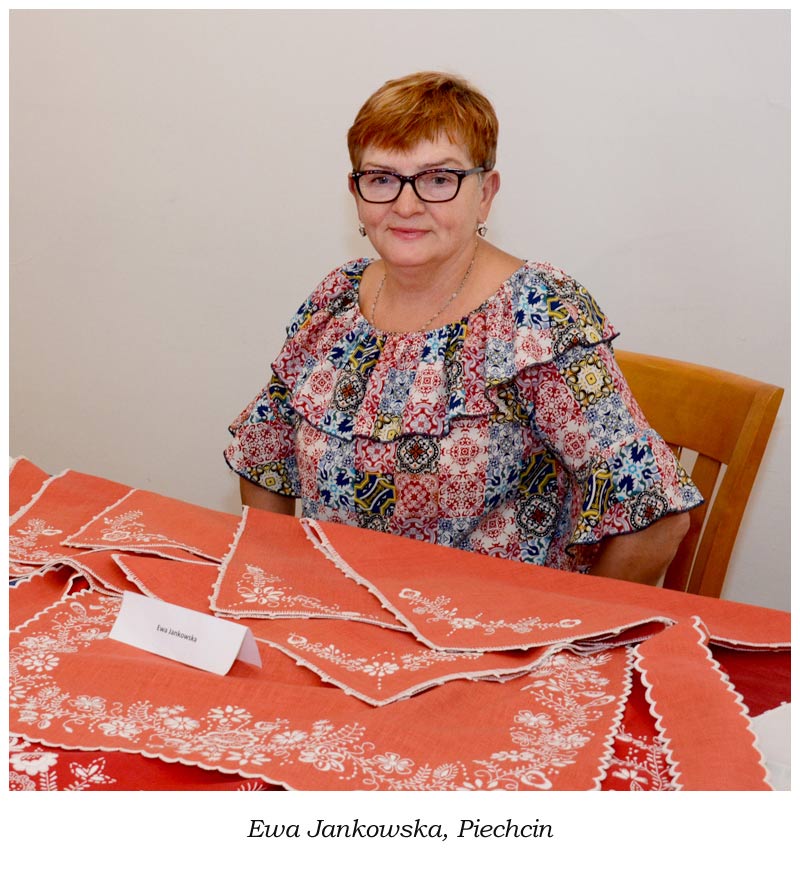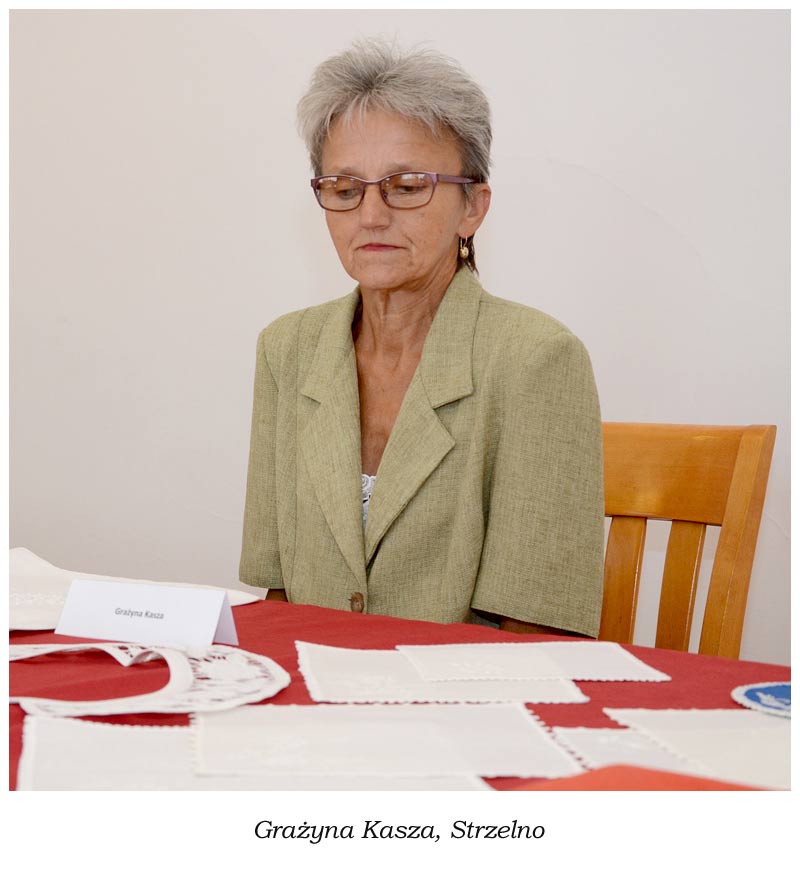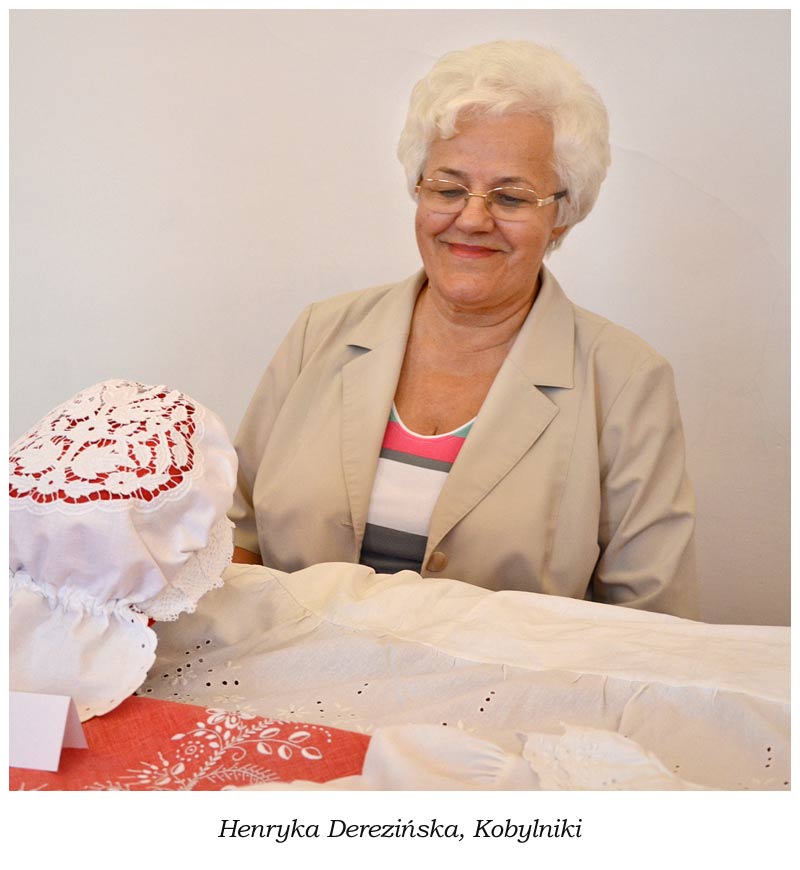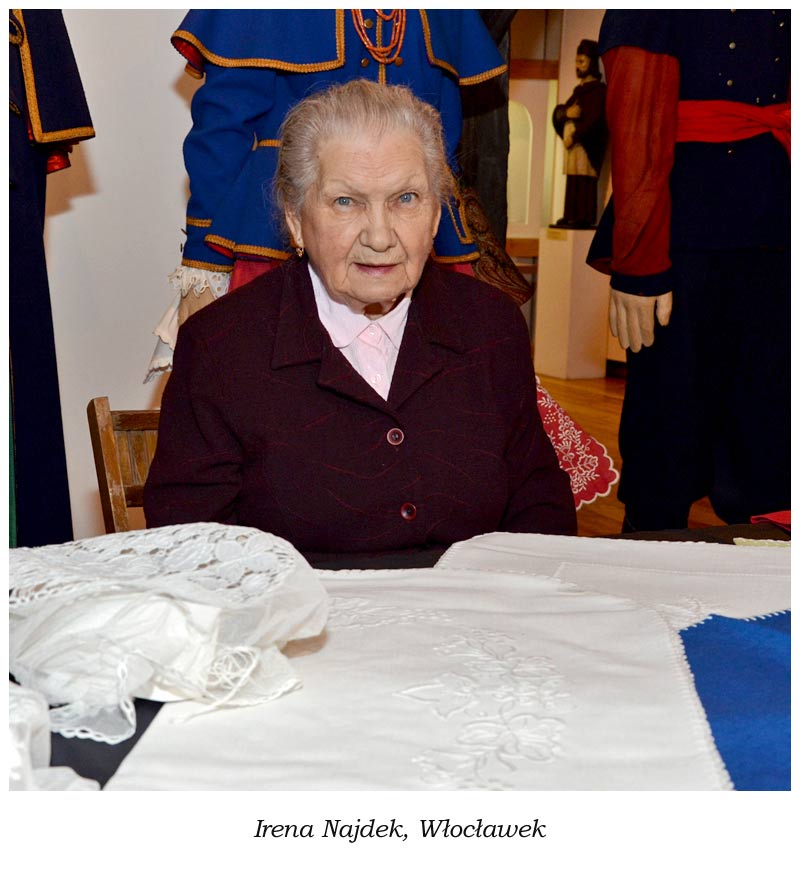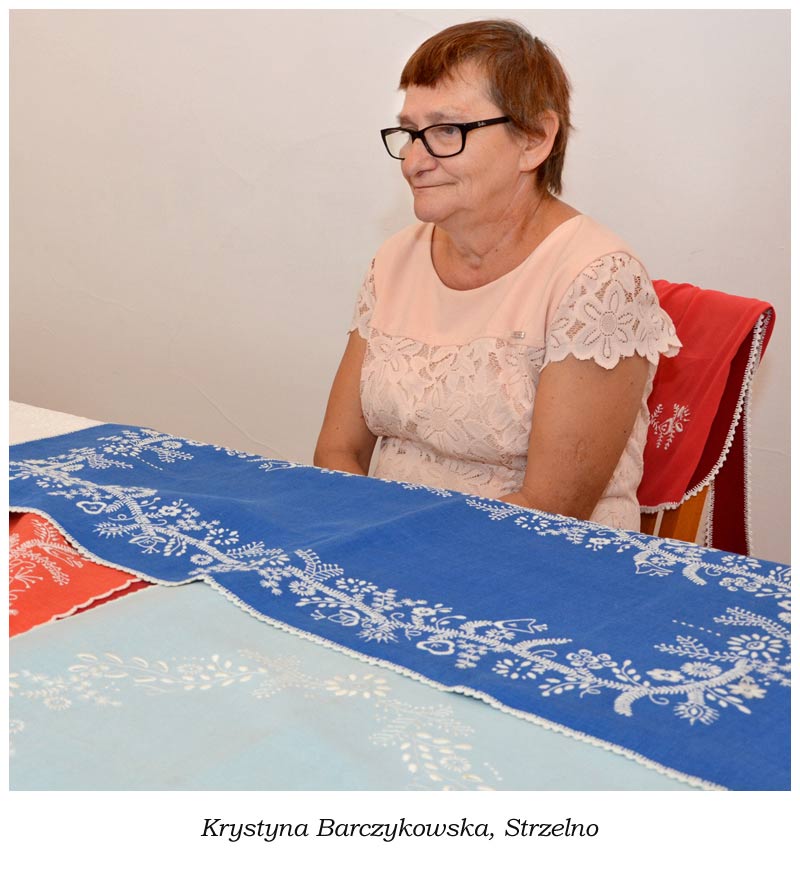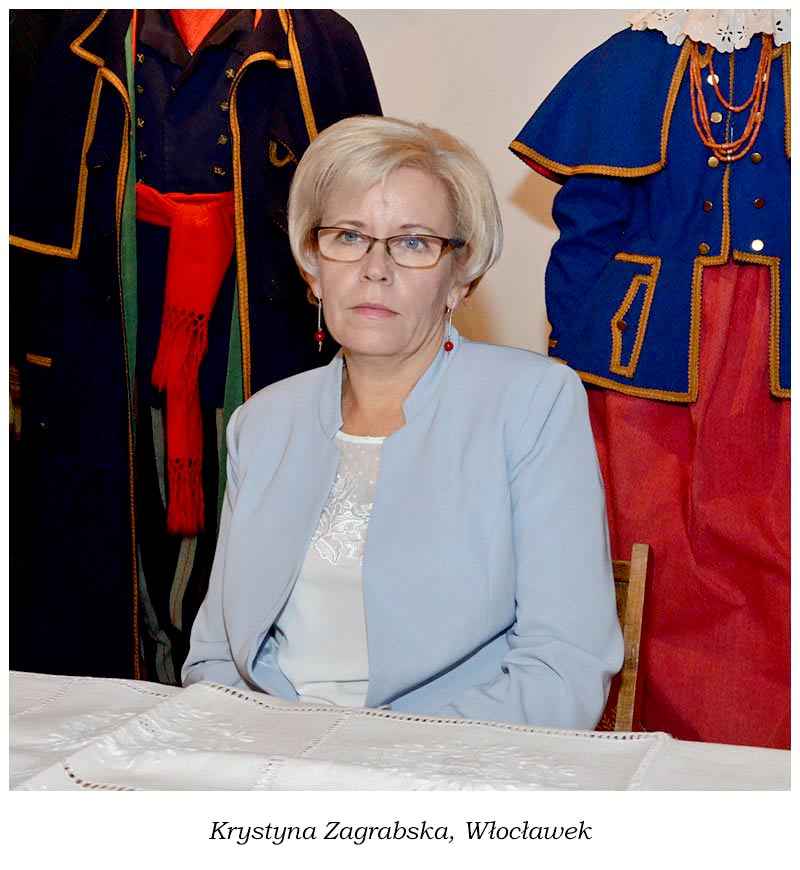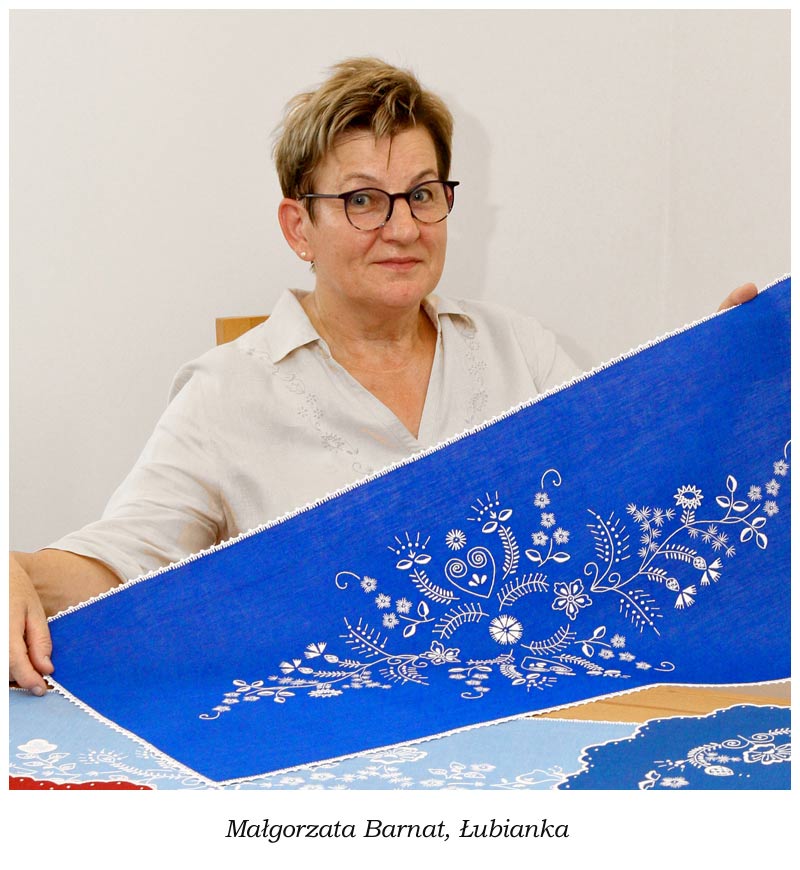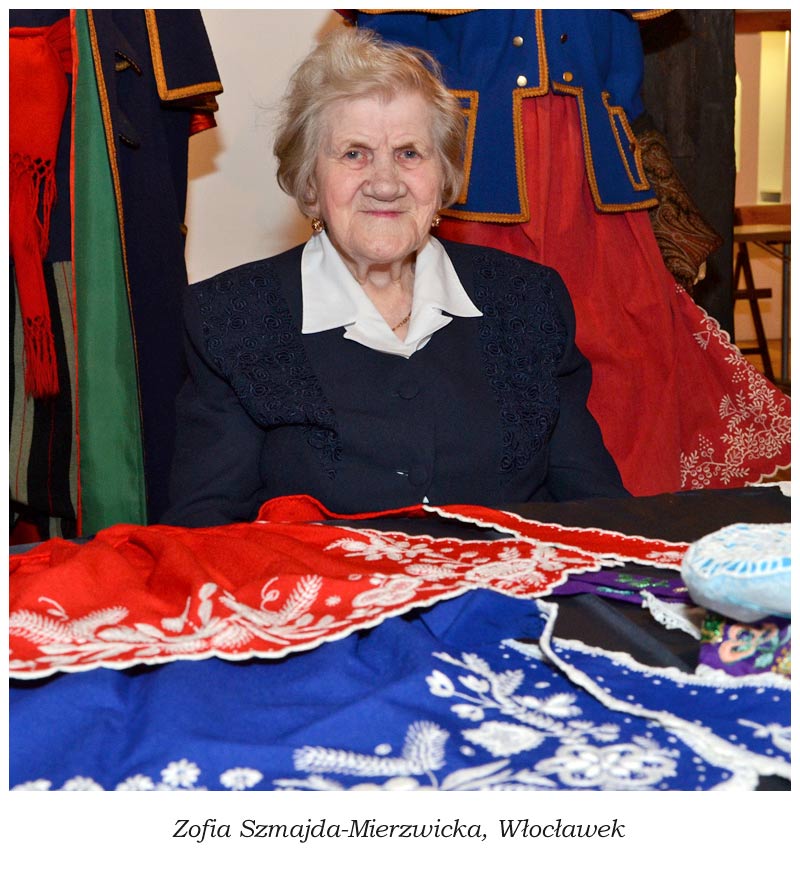
Until 1945, the ability to perform embroidery on outfit elements was mainly passed from generation to generation. After the Second World War, Kuyavian embroidery ceased to be commonly used. With the disappearance of folk costumes their embroidery started to fade, too. At the turn of the 1940s and the 1950s, only the oldest Kuyavians kept a cap and sometimes an apron “for the last journey”. In the first years after the end of the Second World War, the Museum of the Kuyavian Region in Włocławek took on the task of saving Kuyavian embroidery with the help of the still living doyens of this field of folk handicraft. Numerous courses in embroidery were conducted by the best embroiderers as instructors and such persons associated with the museums in Toruń and Włocławek as Halina Mikułowska, Henryka Królikowska and Helena Kuczyńska. As a result, more and more women started to embroider again at the end of the 1950s. Courses were also organised in many localities in the region and they were very popular. In that period, transfer of skills between generations still functioned, although it was not so intensive as before.
In 1956, the first embroidery competition was announced in the Museum in Włocławek and later such competitions were also organised in the Museum in Inowrocław. Since the 1970s, such efforts were also made by the ”Kuyavian Art” Cooperative of Folk and Artistic Handicraft in Włocławek employing homeworkers after courses in embroidery, who recreated Kuyavian designs on modern products. Thanks to those efforts, Kuyavian embroidery has survived and for many women it has become a life passion. The best folk artists in this area gradually transferred old patterns and their compositions onto modern forms, mainly table linen. In addition, ornamentation of folk costumes has also returned in stage costumes of folklore bands performing during festivals as well as costumes of Kuyavian folk artists taking part in various kinds of events which promoted native art and handicraft.
Thanks to the ability to embroider, choose motifs and create compositions, Kuyavian patterns are preserved on fabric. Arrangements of table linen make reference to embroidery on aprons and petticoats. Nowadays, some folk artists transfer embroidery onto completely new forms such as modern women’s blouses, napkins for baskets with the holly or “waiter’s” aprons.
The most important embroidery centres in East Kuyavia include Radziejów, Osięciny, Kowal, Brześć Kujawski, Włocławek and Śmiłowice. At the end of the 19th century, the centre in Radziejów was founded by Joanna Chmielewska (1875-1954).
In the post-war period, the most distinguished folk artists included Genowefa Giergielewicz (1924-2018) from Gołaszewo, Genowefa Kurant (1920-2001) from Brześć Kujawski, Janina Paradowska (1918-2003) from Kowal and Maria Szewczyk (1901-1995) from Śmiłowice. The following artists came from Radziejów: Stanisława Ignasiak (1908-1984), Stanisława Karpińska (1911-1985), Zofia Lewandowska (1914-1989), Leokadia Machtyl (1916-2007), Lucyna Nowacka (1889-1961), Kazimiera Polankiewicz (1903-1963) and Krystyna Wojciechowska (1919-2010). From Włocławek came Regina Majchrzak (1934-2018), Beata Polnisiak (1964-2018), Grażyna Świątek (1952-2018) and Krystyna Włodkowska (1939-2007). Irena Najdek (1933), Zofia Szmajda-Mierzwicka (1926), Krystyna Zagrabska (1963) and Zofia Bielecka (1940) are still active as embroiderers in Włocławek. Maria Nowak (1940), Róża Polewska (1964), Bożena Sobczak (1953) and Jadwiga Reska (1944) are also known in the community of folk artists, although they are no longer active as embroiderers.
The most important embroidery centres in West Kuyavia include Strzelno, Kruszwica, Inowrocław, Pakość, Kobylniki, Sławsk Wielki and Piechcin. Maria Patyk (1924-2011) founded an important embroidery centre in Sławsk Wielki and was among the most distinguished embroiderers. The most outstanding embroiderers in this centre included Barbara Kawalerska (1947-2015), Cecylia Turkowska (1929-2011) and Maria Wudzińska (1913-2009).
Embroidery is continued by Małgorzata Barnat (1960) from Łubianka, Jadwiga Bogdanowicz (1948), Elżbieta Pastuch (1948), Małgorzata Sobota (1953), Agnieszka Wolsza (1928) from Inowrocław, Teresa Barcińska (1956), Henryka Derezińska (1947), Helena Janczyszyn (1952), Jadwiga Turkowska (1959) and Róża Waszak (1949) from Kobylniki, Krystyna Barczykowska and Grażyna Kasza (1957) from Strzelno, Elżbieta Staszak (1948) from Pakość and Ewa Żuchowska-Jankowska (1957) from Piechcin. Jadwiga Kowalska (1928) from Piecki, Zofia Matuszak (1923) from Kruszwica and Wanda Pieczyńska (1924) from Sławsk Wielki have already finished their embroidery activity.

